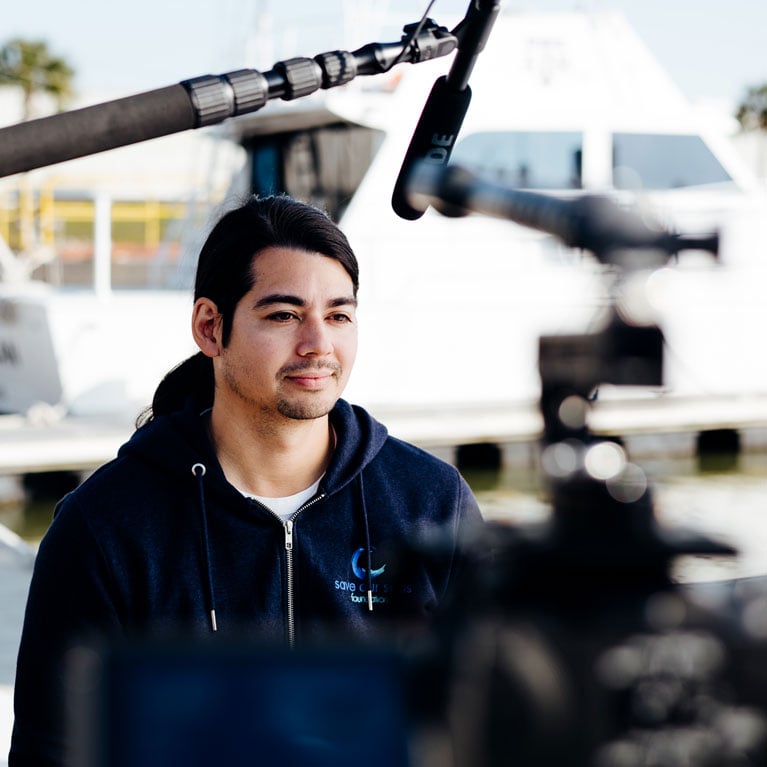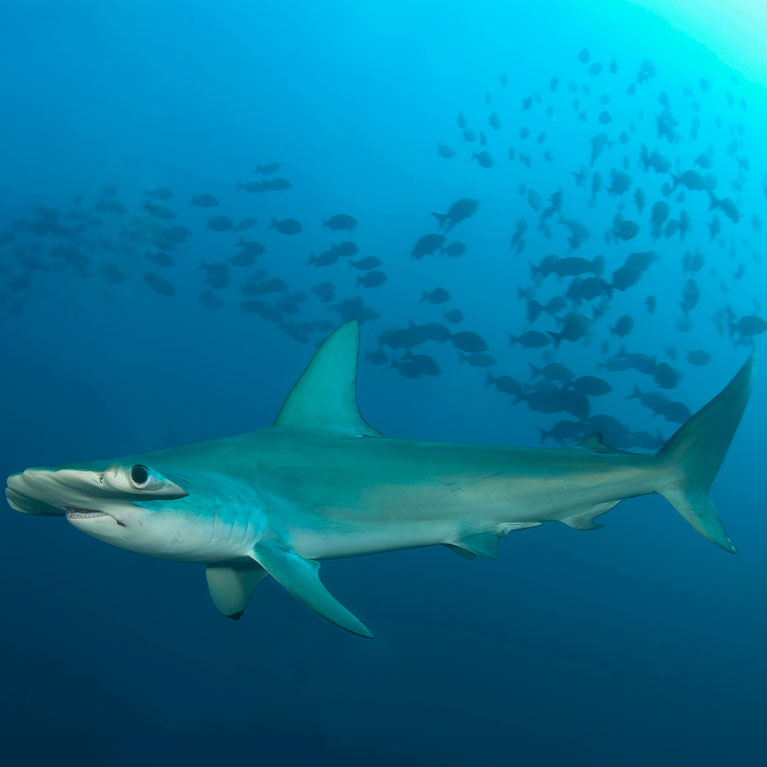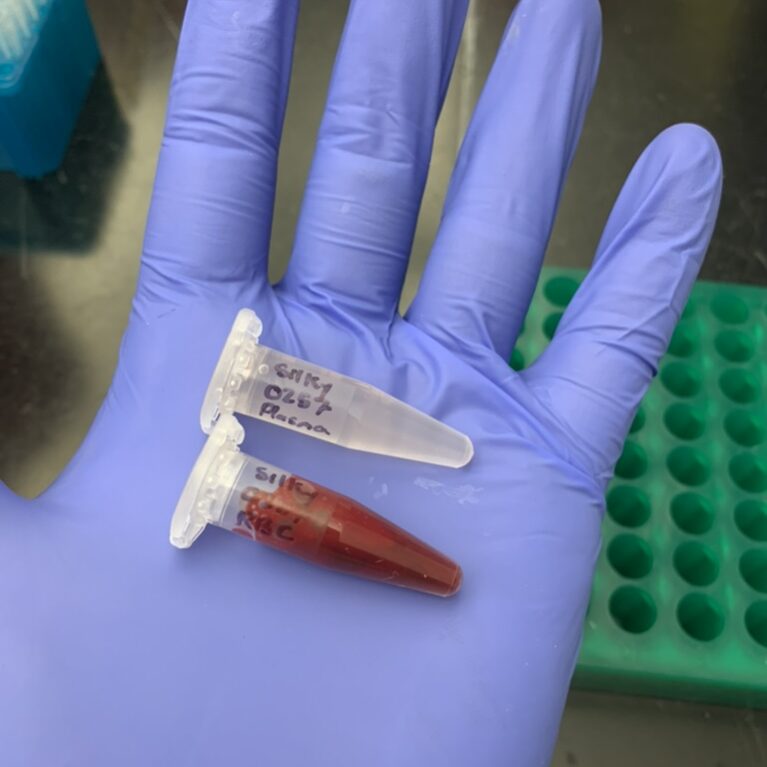Methods to reduce shark stress
Knowing how big predators feed is key to managing their populations properly. But sampling where sharks fit into the food web can often be logistically challenging, financially limiting and sometimes invasive. Brett is exploring a technique called dried blood spot sampling as a novel, minimally invasive method to discover how sharks forage. Using scalloped hammerhead, silky and sandbar sharks as model species, he will be comparing the effectiveness of the method used on shark species for conservation science.
As a child, I remember sitting on the floor wide-eyed, watching BBC Earth’s The Trials of Life series and the episode ‘Hunting and Escaping’, where a pod of orcas deliberately beached themselves on the shoreline of Patagonia to capture a lone sea lion. My interest and excitement in marine predators naturally led me to the fascinating world of shark ecology. After I received my undergraduate degree in biology from Old Dominion University in Virginia, USA, I volunteered at the Bimini Biological Field Station in The Bahamas, where I was introduced to the technological advances of acoustic transmitters and...




Estimating feeding ecology of shark species using a novel technique within a remote marine sanctuary
This project will validate the use of dried blood spot sampling as a suitable alternative to estimate the trophic ecology of shark species. If effective, the dried blood spot methodology could be developed as a minimally invasive sampling technique ideal for species found in logistically challenging and resource-limited field sites globally.
Compounding threats such as overfishing, habitat loss and climate change make it increasingly difficult for researchers to collect tissue samples for stable isotope analysis from shark populations that are rare, declining or threatened. We plan to utilise dried blood spot sampling to minimise stress introduced during the capture-and-handling process by decreasing the sample collection time, and to reduce the financial difficulties associated with the proper storage of biological samples in remote and isolated field settings.
Observing foraging strategies of highly mobile marine predators is vital for understanding their basic ecology and contribution to food web structures. Illuminating these aspects is essential for implementing management strategies that aim to protect sharks and reduce declines in their global populations. We will use stable isotope analysis to estimate the feeding relationships of scalloped hammerhead, silky and sandbar sharks at the Flower Garden Banks National Marine Sanctuary. Isotopic signatures can be used to clarify the allocation of prey resources and identify discrete food webs that predators feed on. We will estimate the foraging strategies of each species using a novel and minimally invasive stable isotope analysis sampling technique known as dried blood spot analysis.
Dried blood spot sampling is non-lethal and relies on the collection of a small volume of blood that can be stored at ambient temperature for extended periods of time without relying on ice to preserve the sample properly. The flexibility of dried blood spot sampling is ideal for gaining insight into discrete food webs and shark species’ foraging habitats within the Flower Garden Banks sanctuary. These species are threatened globally, overfished and commonly exploited for the international shark fin trade. However, they are not listed under the US Endangered Species Act within the Gulf of Mexico, which provides an opportunity to model the efficacy of dried blood spot sampling for other populations around the world. Sharks are often vulnerable to exploitation due to their life history strategies. Researchers capturing rare, declining or threatened species should attempt to streamline the data collection process to minimise the impact on their targets. Dried blood spot sampling provides an opportunity to estimate the foraging ecology of shark species at the Flower Garden Banks sanctuary and may expand our access to resource-limited settings and reduce the logistical and financial challenges associated with remote ecosystems.
- To obtain muscle tissue, whole blood and dried blood spot samples from five individuals from each targeted species (scalloped hammerhead, silky and sandbar sharks).
- To analyse samples by means of stable isotope analysis to estimate food web positioning and foraging habitats for each species.
- To compare the results between the different isotopic analyses to validate the effectiveness of using dried blood spot sampling for shark species.

